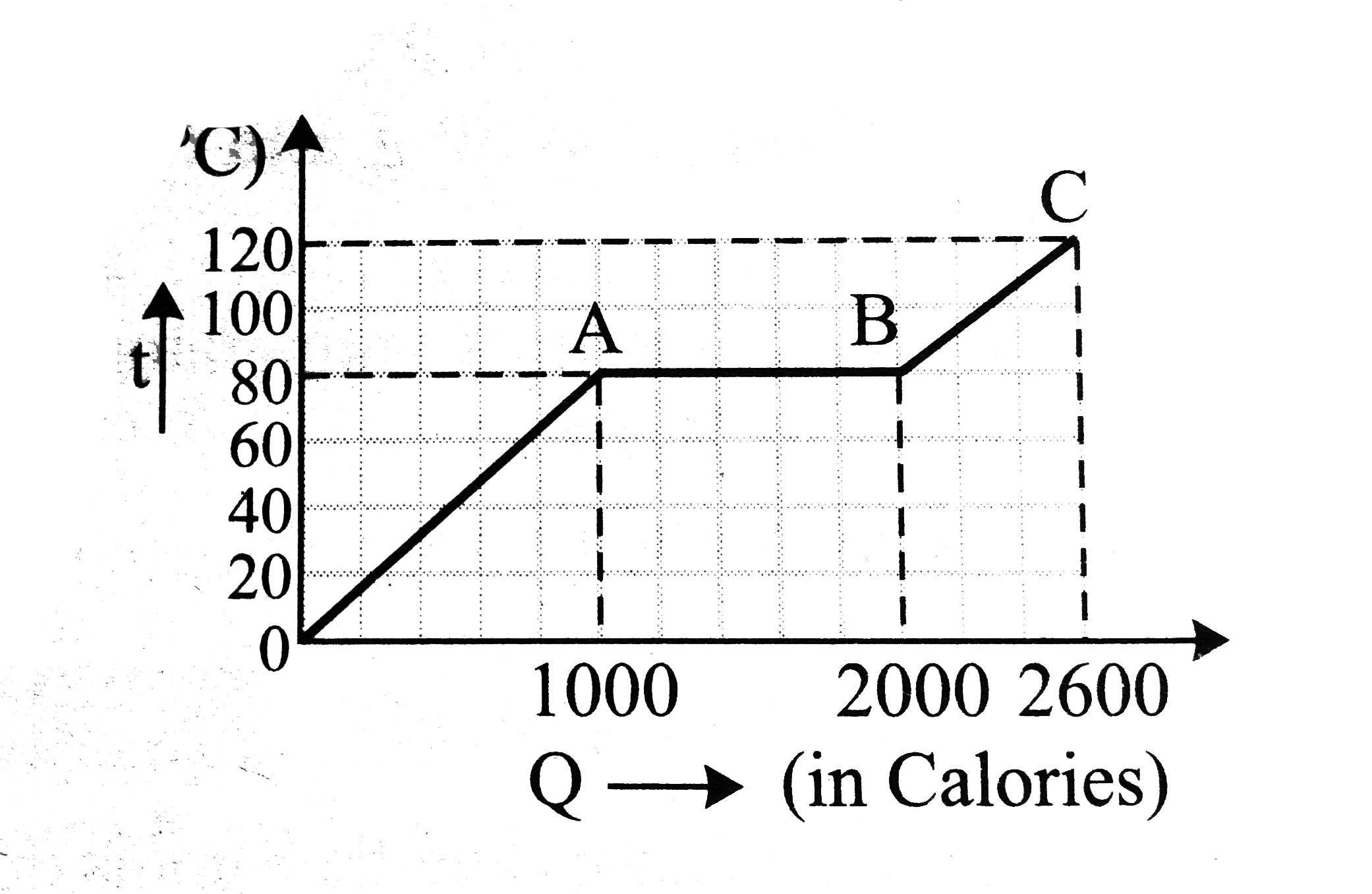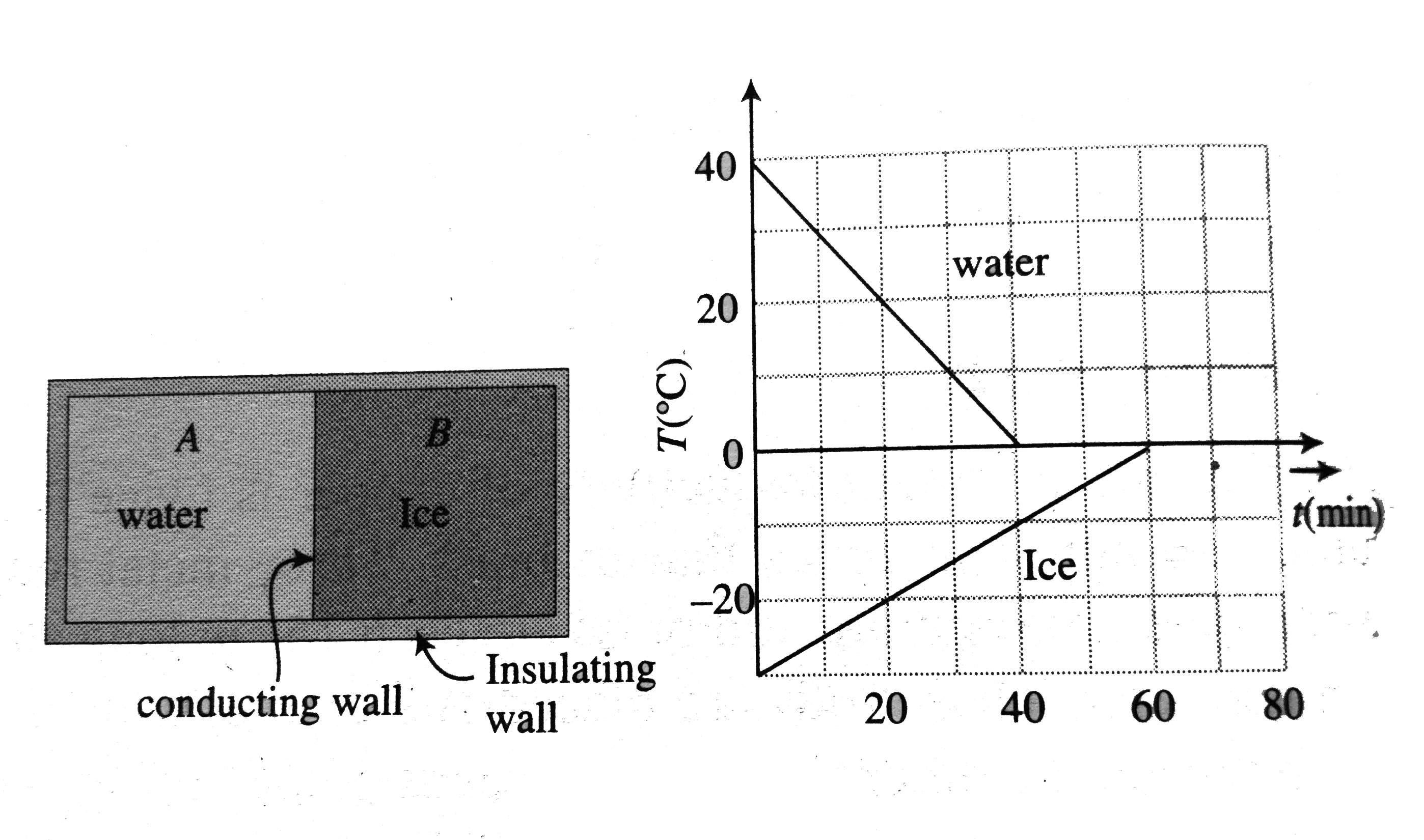Objects A and B that are initially separated from each other and well isolated from their surroundings are then brought into thermal contact. Initially TA=0∘C and TB=100∘C . The specific heat of A is less than the specific heat of B. After some time, the system comes to an equilibrium state. the final temperatures are:
_E01_036_Q01.png)
TA=TB>50∘C
TA>TB>50∘C
TA=TB<50∘C
TB>TA>50∘C
The correct Answer is:A
At equilibrium TA=TB
Topper's Solved these Questions
- BOOK - ALLENCHAPTER - GEOMETRICAL OPTICSEXERCISE - EXERCISE -0282videos
GEOMETRICAL OPTICS
- BOOK - ALLENCHAPTER - GEOMETRICAL OPTICSEXERCISE - EXERCISE -0310videos
GEOMETRICAL OPTICS
- BOOK - ALLENCHAPTER - GEOMETRICAL OPTICSEXERCISE - SOME WORKED OUT EXAMPLES83videos
GEOMETRICAL OPTICS
- BOOK - ALLENCHAPTER - CURRENT ELECTRICITYEXERCISE - EX.II66videos
CURRENT ELECTRICITY
- BOOK - ALLENCHAPTER - GRAVITATIONEXERCISE - EXERCISE 49videos
GRAVITATION
Similar Questions
Two identical systems, with heat capacity at a constant volume that varies as Cv=bT3 (where b is a constant) are thermally isolated. Initially, one system is at a temperature 100 K and the other is at 200K. The systems are then brought to thermal contact and the combined system is allowed reach thermal equilibrium. If T40=n×108 then what will be the value of n, where T0 is the final temperature in kelvin?
View SolutionThe thermal coefficient of resistivity for a material is 10−3/∘C. A potential difference 100 V is applied across a conductor made out of this material at 20∘C. Initially, the rate of total heat dissipation in the conductor is H0. After some time, the conductor achieves an equilibrium temperature 100∘C . The rate of total heat dissipation at this temperature is H .The ratio H0H is _____
View Solution
A substance is in the solid form at 0∘C. The amount of heat added to this substance and its temperature are plotted in the following graph. If the relative specific heat capacity of the solid substance is 0.5, find from the graph (i) the mass of the substance, (ii) the specific latent heat of the melting process and (ii) the specific heat of the substance in the liquid state.
Specific heat capacity of water =1000cal/kg/KView SolutionIn a steady state of thermal conduction, temperature of the ends A and B of a 20 cm long rod are 100∘C and 0∘C respectively. What will be the temperature of the rod at a point at a distance of 9 cm from the end A of the rod
View SolutionIn a container of negligible heat capacity, 200gm ice at 0∘C and 100gm steam at 100∘C are added to 200gm of water that has temperature 55∘C. Assume no heat is lost to the surroundings and the pressure in the container is constant 1.0atm. (Latent heat of fusion of ice =80cal/gm, Latent heat of vaporization of water =540cal/gm, Specific heat capacity of ice =0.5cal/gm−K, Specific heat capacity of water =1cal/gm−K)
What is the final temperature of the system ?View SolutionTwo rigid boxes containing different ideal gases are placed on a table. Box A contains one mole of nitrogen at temperature T0, while Box contains one mole of helium at temperature (73)T0. The boxes are then put into thermal contact with each other, and heat flows between them until the gasses reach a common final temperature (ignore the heat capacity of boxes). Then, the final temperature of the gasses, Tf in terms of T0 is
View SolutionTwo rigid boxes containing different ideal gases are placed on a table. Box A contains one mole of nitrogen at temperature T0, while Box contains one mole of helium at temperature (73)T0. The boxes are then put into thermal contact with each other, and heat flows between them until the gasses reach a common final temperature (ignore the heat capacity of boxes). Then, the final temperature of the gasses, Tf in terms of T0 is
View Solution
A 0.60 kg sample of water and a sample of ice are placed in two compartmetnts A and B separated by a conducting wall, in a thermally insulated container. The rate of heat transfer from the water to the ice through the conducting wall is constant P, until thermal equilibrium is reached. The temperature T of the liquid water and the ice are given in graph as functions of time t. Temperature of the compartments remain homogeneous during whole heat transfer process. Given specific heat of ice =2100J/kg−K, specific heat of water =4200J/kg−K, and latent heat of fusion of ice =3.3×105J/kg.
Initial mass of the ice in the container equal toView Solution
A 0.60 kg sample of water and a sample of ice are placed in two compartmetnts A and B separated by a conducting wall, in a thermally insulated container. The rate of heat transfer from the water to the ice through the conducting wall is constant P, until thermal equilibrium is reached. The temperature T of the liquid water and the ice are given in graph as functions of time t. Temperature of the compartments remain homogeneous during whole heat transfer process. Given specific heat of ice =2100J/kg−K, specific heat of water =4200J/kg−K, and latent heat of fusion of ice =3.3×105J/kg.
Initial mass of the ice in the container equal toView SolutionA substance is in the solid from at 0∘C. The amount of heat added to this substance and its temperature is plotted in the graph . The specific heat capacity of the solid substance is 0.5cal/g∘C.
_E01_235_Q01.png)
Specific heat capacity in the liquid state is -View Solution

